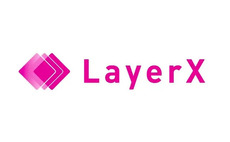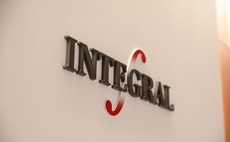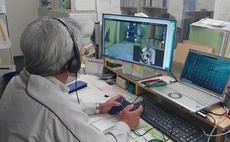
LP interview: Korea's POBA
Korea’s Public Officials Benefit Association is expanding its private equity exposure and global footprint. Maintaining this diversification within the firm’s traditional risk profile requires a gradual approach
There are few concepts in finance more conservative than the "beauty contest" investment model, where a safe bet is identified by its popularity, and a wave of interest in any particular opportunity helps minimize decision-making accountability even in the event of a flop. But contests are a challenge by their very definition, so if the costs of competition are a risk factor to be considered, this approach may not be as conservative as it first appears.
Korea Public Officials Benefit Association (POBA) has demonstrated this understanding in recent years with a pivot away from beauty-contest GP selection toward individual screening strategically like-minded managers through more focused committee-based processes. Earlier this year, the evolution was punctuated with the selection of three GPs that will receive $50 million commitments each as part of a measured private equity diversification play.
The GPs include buyout-focused TPG Capital as well as Coller Capital and Ardian, which respectively reflect the pension fund's growing interest in secondaries and co-investment. The investments say much about POBA's philosophy of maintaining a conservative stance even as it branches out: Developed markets will remain the primary targets and competence will be the primary prerequisite for confidence.
"Our selection process is very competitive because we can only sign on with a very tiny number of GPs," says Dong Hun Jang, CIO at POBA (pictured). "We like GPs that have had strong outperformance records for long periods across both up-markets and down-markets. It's the only way to limit downside risk, especially with buyout funds."
Building up
Jang, who previously managed private equity portfolios for Korea's National Pension System, joined POBA in late 2015 as part of the firm's return to the asset class. PE allocations were suspended in the wake of the global financial crisis and resumed around 2015 with LP commitments to local managers including IMM Private Equity, Skylake Investment, and KDB Infrastructure Investments Asset Management.
Significantly, this period also saw POBA make its first overseas forays, including support for an infrastructure fund managed by Canada's Fengate Capital in collaboration with Seoul-based KB Asset Management. Jang has since led the effort to internationalize operations, helping take the proportion of overseas assets from about 20% in 2015 to 40% today. This outreach has been even more aggressive in alternatives, where the offshore share has grown from less than one-third to almost half of the portfolio.
"Korea's pension industry is going through the same pattern as the manufacturing industry, which has been pretty focused on increasing overseas exports to survive because the domestic market is just not quite enough to generate adequate returns," Jang explains. "The size of most Korean pensions' assets under management (AUM) is going to grow quickly in the next 10-20 years because of demographic issues, so the investment opportunity is becoming limited domestically."
As of the end of 2017, POBA's total AUM came to KRW11.1 trillion ($10 billion), about 55% of which was allocated to alternatives, including 13% in private equity. Within PE, some 60% of assets are represented by various debt products, while the remaining 40% is in pure equity investment. Diversification of these respective fields has been a major theme as POBA has extended itself overseas. The plan initially focused on buyout strategies, but has increasingly included complementary plays around secondaries, credit, mezzanine, and co-investment.
Earlier this year, POBA committed $50 million to a credit co-investment fund managed by Hamilton Lane and made a EUR70 million ($82 million) commitment to a European direct lending fund run by Ares Management. Occasional, opportunistic direct investment activity is also starting to creep into the mix, with three infrastructure deals realized in the past year, two in the UK and one in Australia.
Required returns
Across the board, the refrain has been a focus on reliable annual cash flows, even if they are in a relatively modest range. While double-digit returns are still expected from the buyout funds, the majority of the other plays in the PE category are targeting stable 5-8% returns.
"Our private equity strategy may look strange compared to pension funds in other developed markets because we have a very strong mantra that we should not lose any principal at all," Jang explains. "Institutions in Korea like POBA still have to go through government audit processes regularly, so we're still conservative, but alternatives are a core part of our portfolio. That's why we're committing more to secondary investments, private credit and private debt."
The average check size for fund commitments is now around $50 million, up from the $30 million range that predominated when Jang joined the firm. In cases where a fund is a particularly good fit, deployments can go as high as about $80 million. However, the main driver for this increase has not been POBA's shift toward more PE activity, it is a demographics-driven rise in dry powder being experienced by pension funds across Korea.
"It's getting very tough to increase returns by just one percentage point, and competing with other pensions domestically is getting harder," says Jang. "So, we would like to expand our joint investments with other global pensions that have more experience with overseas investments and screening processes. And if they want to invest in other asset classes where POBA has more experience, we can work together in those areas."
Joint ventures in this vein to date include investments with Teachers' Retirement System of Texas and California State Teachers' Retirement System (CalSTRS). Jang says, however, that more investment opportunities are needed in Europe and Japan to hedge POBA's foreign exchange position. Although overseas exposure has been increasing at a rapid pace for the past 2-3 years, it is expected to level off in the near term as risks related to currency exchange – and a host of macro-level variables – come into focus.
"These days there is a lot of negative news around global liquidity declining, interest rates rising, and assets getting pricier, so we think we need to invest in alternatives because we follow an absolute return strategy," says Jang. "No matter what the public markets look like, we need to meet our members cash payments, so even though we will be more conservative, will continue to find niche areas to generate our expected returns."
Latest News
Asian GPs slow implementation of ESG policies - survey
Asia-based private equity firms are assigning more dedicated resources to environment, social, and governance (ESG) programmes, but policy changes have slowed in the past 12 months, in part due to concerns raised internally and by LPs, according to a...
Singapore fintech start-up LXA gets $10m seed round
New Enterprise Associates (NEA) has led a USD 10m seed round for Singapore’s LXA, a financial technology start-up launched by a former Asia senior executive at The Blackstone Group.
India's InCred announces $60m round, claims unicorn status
Indian non-bank lender InCred Financial Services said it has received INR 5bn (USD 60m) at a valuation of at least USD 1bn from unnamed investors including “a global private equity fund.”
Insight leads $50m round for Australia's Roller
Insight Partners has led a USD 50m round for Australia’s Roller, a venue management software provider specializing in family fun parks.








